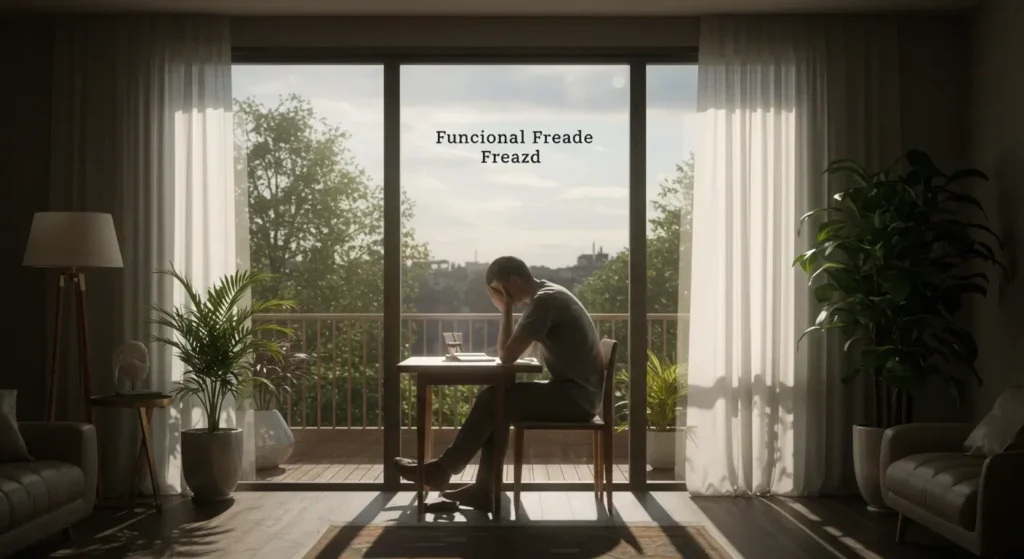Functional freeze is a psychological and physiological response that many individuals experience in times of acute stress or trauma. Often associated with the “fight-or-flight” response, functional freeze occurs when the body temporarily becomes immobilized, leaving individuals mentally and physically stuck. This phenomenon is increasingly recognized in the fields of mental health and trauma therapy. However, many still don’t fully understand its underlying causes or how it impacts daily life.
In this blog, we’ll explore what functional freeze is, its symptoms, causes, and practical coping strategies, so you can better understand how to manage its effects.
Understanding Functional Freeze
Functional freeze refers to immobility triggered by overwhelming stress or fear. While most people are familiar with the “fight or flight” response, where we either react aggressively or flee from danger, “freeze” is less commonly recognized. This freeze response is part of the body’s natural defense system, activated when we perceive a threat we cannot fight or escape.
In this state, individuals may feel mentally paralyzed and physically unable to act, even if they are in a safe environment. This response can occur in moments of extreme anxiety, trauma, or stress. It can last anywhere from a few moments to longer durations.
Symptoms of Functional Freeze
The symptoms of functional freeze are both physical and mental. Some of the most common signs include:
- Physical Immobilization: A feeling of being “stuck” or unable to move, even without immediate danger.
- Dissociation: A sense of detachment from reality or feeling disconnected from one’s body.
- Shallow Breathing: Breathing may become shallow or irregular, contributing to feelings of panic or anxiety.
- Inability to Respond: A person might struggle to speak or take action, even when they want to.
If you experience these symptoms during stressful situations or moments of anxiety, you may be encountering the functional freeze response.

Causes of Functional Freeze
The freeze response is an innate survival mechanism that has evolved in our brains to help us cope with perceived threats. The fight-or-flight response, initiated by the amygdala (the brain’s emotional center), prepares the body to fight or run in the face of danger. But what happens when both options seem impossible?
This is where the freeze response kicks in. It’s theorized that freezing can make us less noticeable to predators or help us avoid detection in a threatening environment. In modern life, however, this response can be triggered by non-life-threatening situations, such as work stress, relationship issues, or even social anxiety.
Key factors that can trigger functional freeze include:
- Trauma: Individuals who have experienced significant trauma, such as abuse or an accident, are more likely to experience functional freeze during similar triggers.
- Anxiety: Chronic anxiety can prime the brain to react with freezing when confronted with stressful situations.
- PTSD: Post-Traumatic Stress Disorder can cause flashbacks, where the body reacts as though the traumatic event is happening again, leading to freezing.
How to Cope with Functional Freeze
While functional freeze can feel overwhelming, several strategies can help you regain control and reduce the impact of the freeze response. Here are some practical methods:
1. Mindfulness and Grounding Techniques
Mindfulness involves focusing on the present moment, which can help interrupt the freeze response and bring you back to the here and now. Grounding exercises, such as focusing on the sensation of your feet on the ground or deep breathing, can also help you feel more connected to your environment.
2. Cognitive Behavioral Therapy (CBT)
CBT is a well-established therapeutic approach that helps individuals reframe negative thought patterns and behaviors. Working with a therapist trained in CBT can help you address the root causes of functional freeze and learn new coping mechanisms.
3. Breathing Exercises
Slow, deliberate breathing is one of the quickest ways to regulate your body’s response to stress. Try practicing deep breathing exercises, where you inhale for 4 seconds, hold for 4 seconds, and exhale for 4 seconds. This helps calm the nervous system and can break the cycle of freezing.
4. Physical Movement
Gentle movement, such as stretching or walking, can help release physical tension and restore the body’s natural flow. Yoga and Tai Chi, which combine slow movements and breathwork, can also be very beneficial in reducing the frequency of freeze responses.
5. Trauma-Informed Care
If your functional freeze is linked to past trauma, seeking therapy from a trauma-informed professional can be especially helpful. Techniques like EMDR (Eye Movement Desensitization and Reprocessing) or somatic experiencing focus on healing the body’s response to past traumatic events and can significantly reduce episodes of functional freeze.
When to Seek Professional Help
While functional freeze is a natural response, if it interferes with your daily life, relationships, or overall well-being, it may be time to seek help from a mental health professional. Conditions like PTSD, anxiety disorders, and depression can all contribute to frequent freeze responses, and therapy can be a vital part of the healing process.
Final Thoughts
Understanding functional freeze is the first step in taking control of your mental and physical responses to stress. With the right tools and support, managing the effects of freeze responses and living a more balanced, grounded life is possible.
